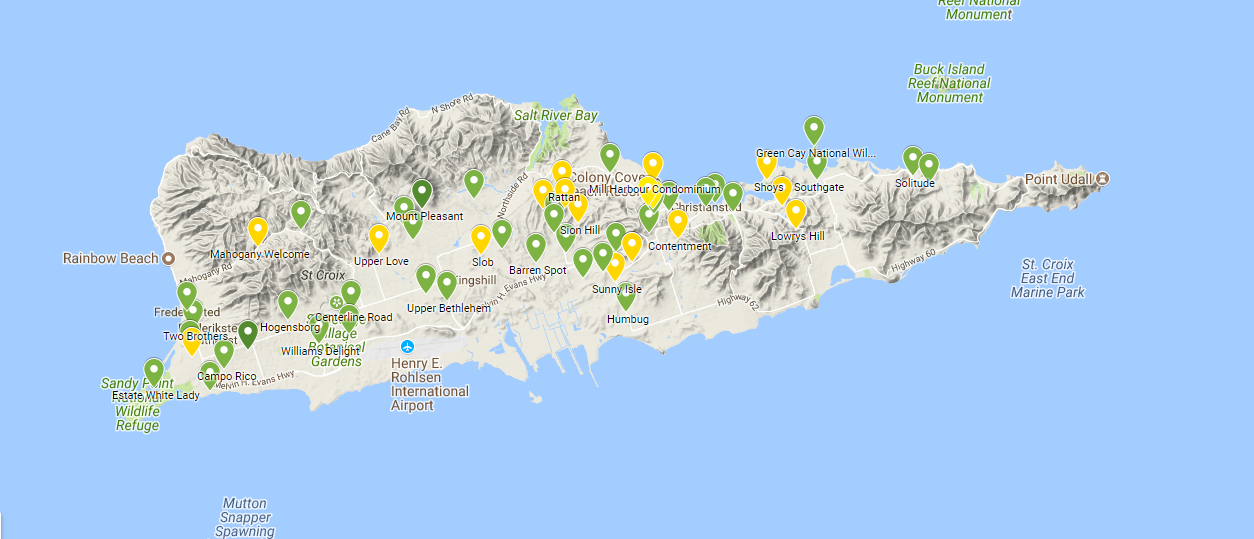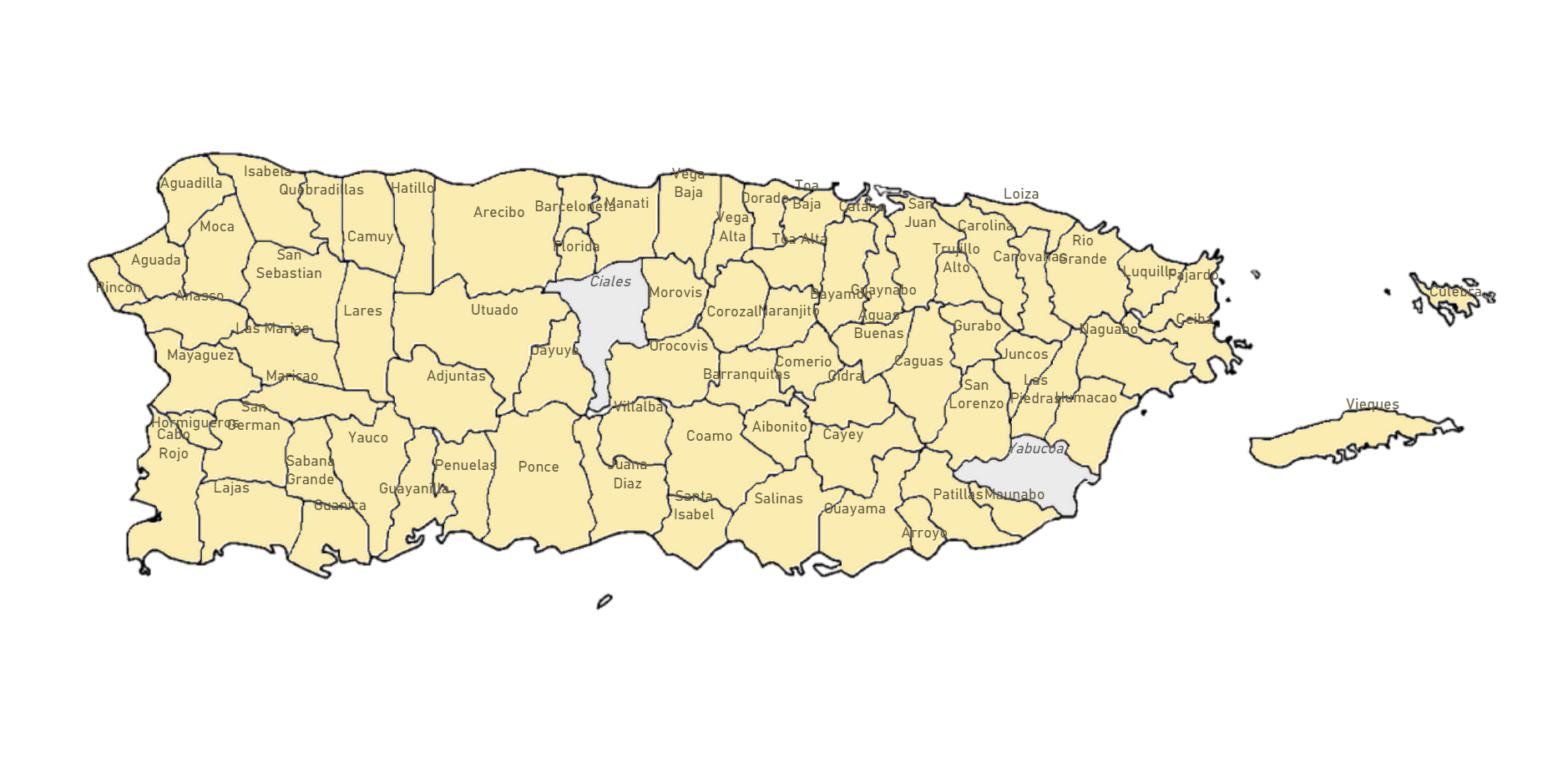
Puerto Rico and the US Virgin Islands - 100 Days After Hurricane Maria
ContactRelief recommends resumption of contact with consumers in the US Virgin Islands and most areas in Puerto Rico.
Sunday, 31 December 2017 18:00:00 -06:00
ContactRelief Recommendations for Contact Centers
ContactRelief is making public recommendations made to ContactRelief subscribers, Saturday, December 30th, 2017. ContactRelief recommends resuming contact with consumers in most areas of Puerto Rico and all areas in the U.S. Virgin Islands.
Hurricane Maria Recap
On September 20, 2017, Hurricane Maria reached its peak intensity 30 miles south of St. Croix, the largest of the three U.S. Virgin Islands. With sustained winds of 175 mph, Hurricane Maria easily exceeded the Category 5 minimum sustained wind speed of 157 mph, ranking as the 10th most intense Atlantic hurricane on record. For comparison, a total of 33 Atlantic hurricanes have reached Category 5 strength but only about half had sustained winds of 175 mph or greater with several like Maria at 175 mph.
While the outer eyewall of Maria lashed St. Croix, the more intense inner eyewall stayed off-shore. But with a hurricane force wind field of over 30 miles and tropical force winds extending out 125 miles, Maria's impact was felt not just in St. Croix but also in the other U.S. Virgin Islands, St. Thomas and St. John. The storm weakened slightly as the outer eyewall replaced the inner eyewall. Hours later, Maria made landfall south of south of Yabucoa, Puerto Rico with sustained winds of 155 mph making it the strongest hurricane to hit the island since 1928's Okeechobee hurricane.
Damage to the U.S. Virgin Islands and Puerto Rico was extensive, especially to Puerto Rico. Electrical power was knocked out as high winds snapped utility poles and damaged distribution infrastructure. Virtually every aspect of both island's infrastructure including water, food supply, and telecommunications was affected. Damage estimates vary, but many sources put the total damages from Hurricane Maria at $100 Billion dollars making Maria the second most costly hurricane on record.
Last week, ContactRelief recommended to its subscribers resumption of contact with consumers in the U.S. Virgin Islands, and today we are recommending resumption of contact with consumers in most areas of Puerto Rico. One hundred days after Hurricane Maria made landfall, both Puerto Rico and the U.S. Virgin Island have made progress in their respective recovery efforts, but both face additional challenges and a long road ahead before either island reaches its pre-hurricane status.
U.S. Virgin Islands Recovery Update
Damage to the U.S. Virgin Islands was extensive. As in Puerto Rico, electrical power was knocked out almost immediately. Officials estimated that restoration of power would take months and these estimates have proved to be understated. ContactRelief has been tracking the restoration of electrical power since the storm struck in September. The maps below show the restoration status for each island by neighborhood with green indicating complete, yellow partial restoration, and red indicating that restoration efforts have just started.
St Croix has a population of just over 50,000 people. FEMA reports that 69.7% of customers on St. Croix now have electrical power.

The island of St. John is largely a national preserve and has a population of a little over 4,000. FEMA reports that 92.8% the island's customers now have electrical power.

St. Thomas, a perennial cruise ship destination, has a population of near 40,000. It is slightly ahead of St. Croix with 70.5% of the island's customer now with power.

Puerto Rico Recovery Update
In contrast to the Virgin Islands, recovery in Puerto Rico has been more difficult. The island was already suffering from years of economic mismanagement most readily seen in the island's dilapidated electrical infrastructure. It seems a cruel twist of fate that the very thing most ignored was the thing most needed after Hurricane Maria struck.
Puerto Rico officials promised restoration of 90% of electrical customers by Christmas, but because of bureaucratic missteps, the slow reaction by the U.S. Government, and the extent of the damage, those estimates were wildly optimistic. Government officials now believe that full restoration will not occur until May of 2018 or later.
PREPA, the Puerto Rico Electric Power Authority, says that electrical generation capacity reached 69.80% of pre-hurricane Maria capacity, and as is shown on the map below is able to reach all but two geographic regions on the island. However, due to the aging power infrastructure, PREPA is unable to accurately determine the number of customers with power. As of December 27, 2017, FEMA estimates this to be only be 55% of the total population.

On the positive side, the telecommunications service restoration has been more successful with officials reporting 95% service restored and 85% of cell towers operational. However, we note that as with electrical power, wired telephone service can only be restored to houses still standing and many houses on Puerto Rico were not so fortunate.
Puerto Rico faces significant challenges not only in the continued restoration of its infrastructure but also in the rejuvenation of its economy, repatriation of a significant portion of its population that left the island for the United States mainland after the storm, and restructuring of its governmental and utility institutions to meet the needs of its citizens, now and in the future. While ContactRelief recognizes these challenges and the difficulty facing Puerto Rico's citizens, we believe that having reached 50% of the electrical power restoration, the region is now ready to begin reestablishing commercial communications. Having kept our recommendation to suspend contact in place for over 100 days, we are now recommending resumption of contact with all areas in Puerto Rico except for two counties where power restoration at the power generation level has not kept pace.
To obtain the list of zip codes still suspended in Puerto Rico, become a ContactRelief subscriber.
For as little as $300 per month, your company can avoid disasters by shaping the customer experience.
Schedule Your Product Demo Now!
Don't Delay
The next disaster is on its way. Become a ContactRelief subscriber and keep your company protected from disaster. Our full recommendations consist of the areas to be suspended and the list of zip codes covering these areas. For as little as $300 per, month your company can quickly implement a solution that protects your company and its customers. As we say at ContactRelief, "It's just smart business."
Contact sales@contactrelief.com for more information.
